Master Naturalist Training - Week 4
/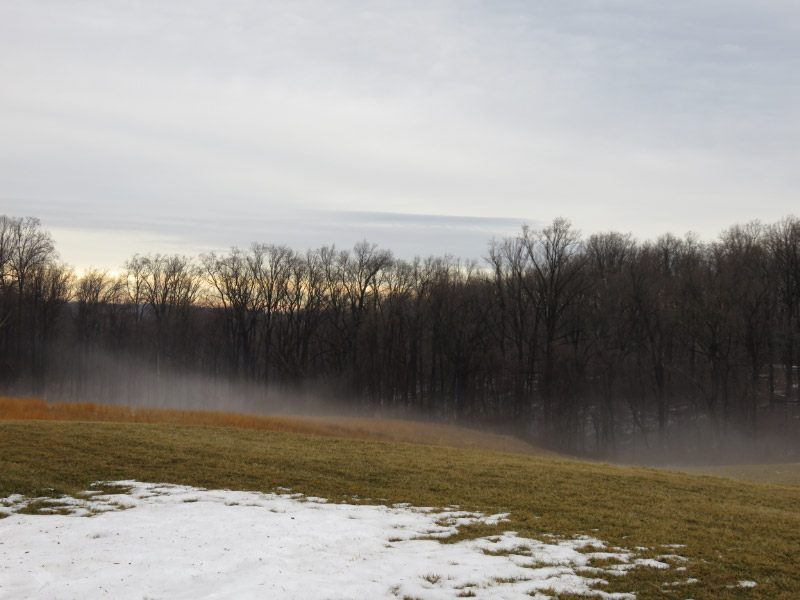 Last Wednesday was the fourth of eight days of training to become a Master Naturalist in Maryland. Snow was not in the forecast….but there was still some on the ground. As I walked from the parking lot to the building, the fog was hanging in the low places and into the forest; daylight savings time made a difference in the lighting as well.
Last Wednesday was the fourth of eight days of training to become a Master Naturalist in Maryland. Snow was not in the forecast….but there was still some on the ground. As I walked from the parking lot to the building, the fog was hanging in the low places and into the forest; daylight savings time made a difference in the lighting as well.
The two topics for the day were
- Microbes, Mosses and Mushrooms and
- Humans and the Landscape
I did the pre-reading for both modules and the factoid that popped out was that the cell walls of mushrooms are made of chitin (the same molecule that makes insects’ exoskeletons!). How had I missed learning that in the mycology class I took back in the 70s?
Another key learning from the beginning topic of the day was the logistics of the lecture. The instructor had her one year old son with her! I thought it was would be distracting (and eventually he was taken off to another room by a helper) but the lecture was interesting and he provided some of the lighter moments of the morning. It is not something that could be done for every class but I am thinking more often about ways we can blur the divide between work and the other things we do in our lives. The industrial age forced us to make work totally separate - but humans didn’t evolve in that kind of environment. Our interests were multi-faceted with only short bursts of total focus. Concentrating on one thing for a long period of time (the way many jobs are formulated) can be stressful simply because the human brain and body did not develop in that environment.
Later in the day we hiked into the woods and found lots of fungi. Slims and jellies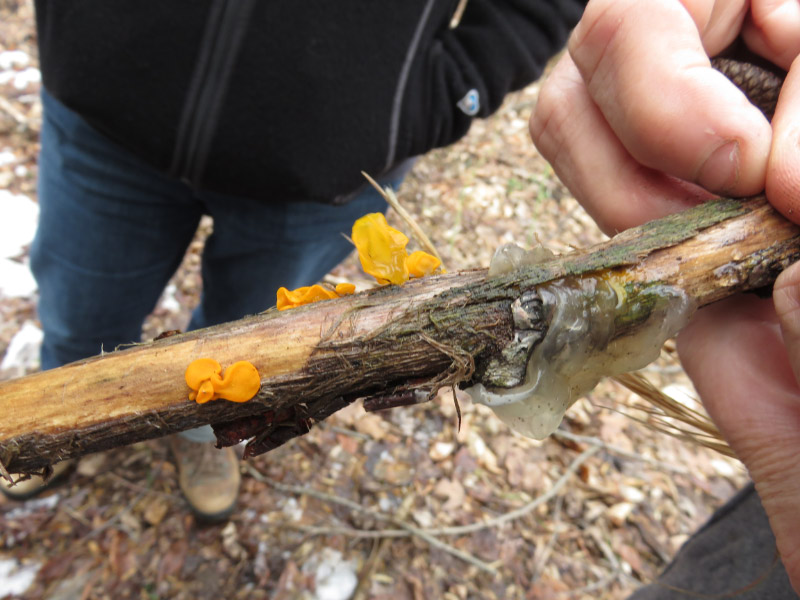
Shelf fungus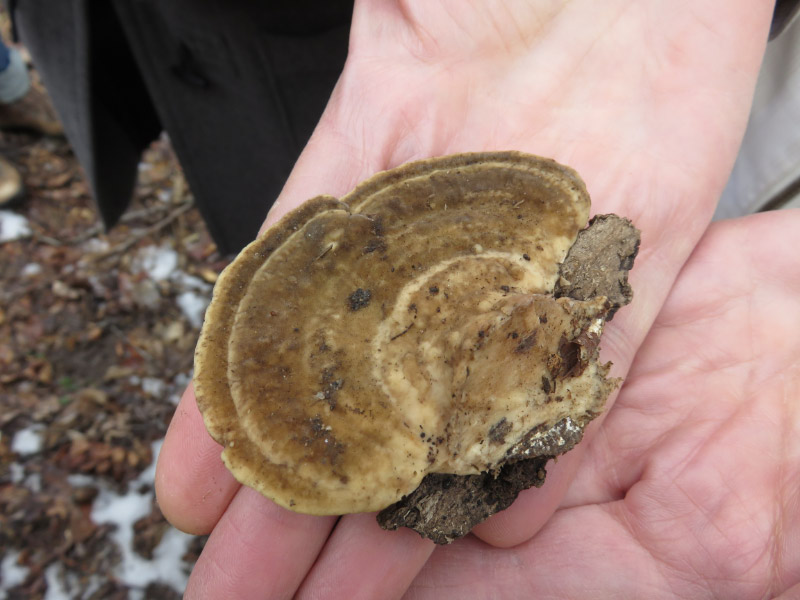
With pores (rather than gills) underneath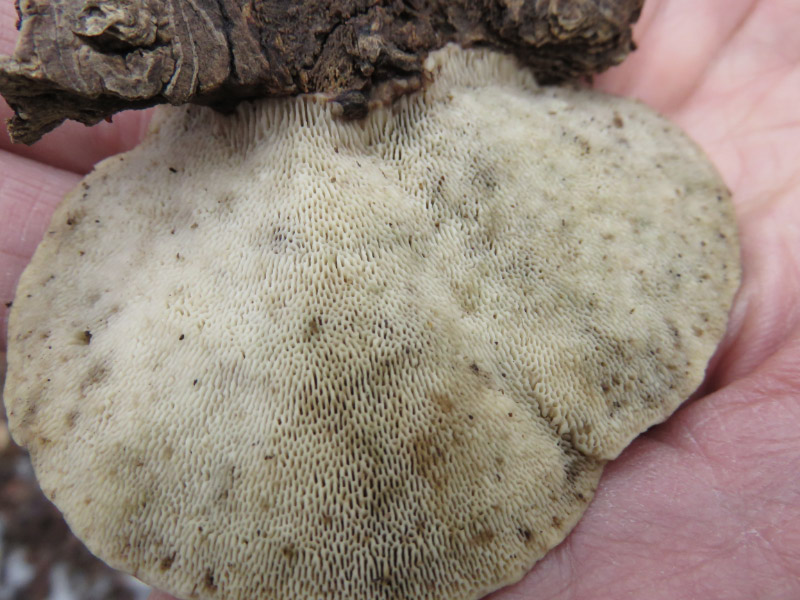
Lichen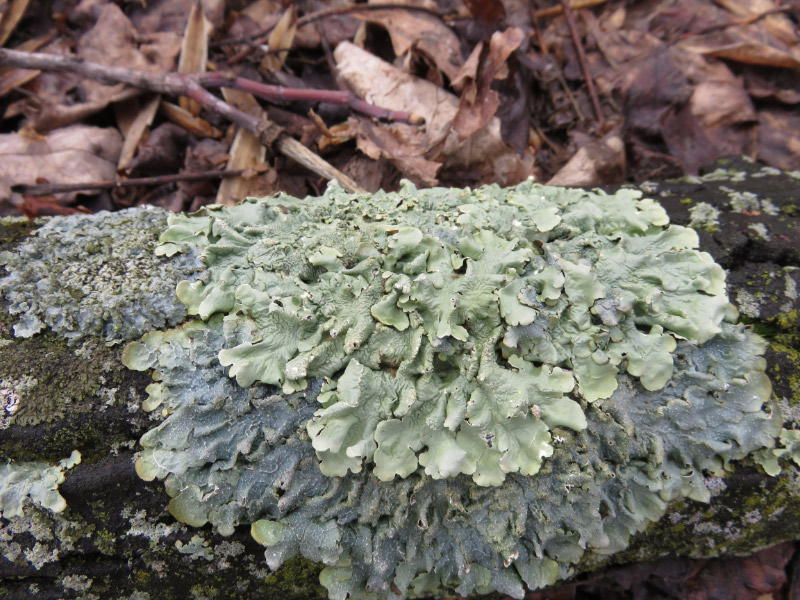
In the afternoon we had two lectures. The first gave a history of the human development of the land along the Patapsco River (near our classroom). The story included John Smith (noticing red clay), a harbor just below the falls of the river was the second busiest harbor in Maryland after Annapolis until is silted up, the deforestation to feed the iron forges and heat houses, the mills (flour and textile), the floods, and trains - the first cars pulled by horses before steam engines were developed. Much of the around the river is deforested and is a heavily used state park. Floods are still a problem. The one caused by Hurricane Agnes in 1972 took many years of recovery.
Switching gears - the next lecture was from a wildlife perspective. The impact of plants and animals brought to the New World was discussed. Some introductions were accidently but had a huge effect: earthworms changed the forest floor from deep mulch with lots of moisture to drier places….and changed the understory; chestnut blight took away the biggest tree in the forest. There is more forest in the area now than there was 100 years ago but the deer population is so large that plants in the understory are increasingly thorny invasive plants. We’ll have another lecture on invasive plants in week 6.
At the end of the day, I thought about my expectation that the lectures couldn’t all be as interesting as the first few - but the ones this week were still the same high quality in terms of material and presentation. And the weather is enabling more outside treks….makes it even better!















